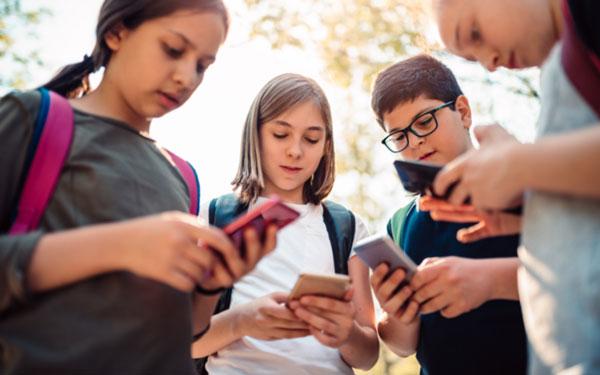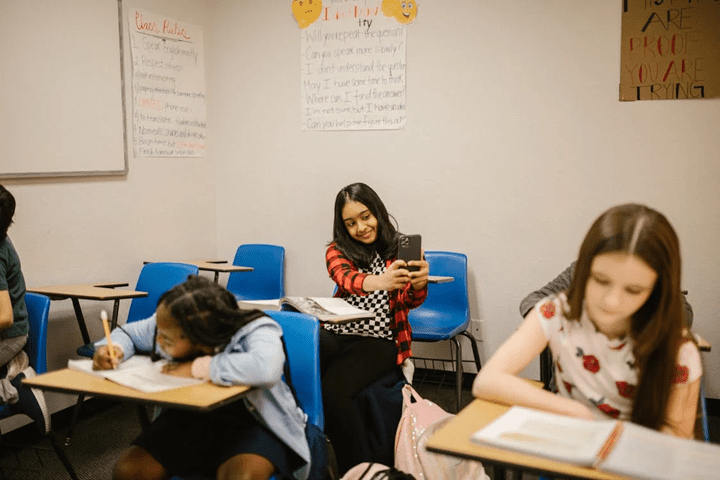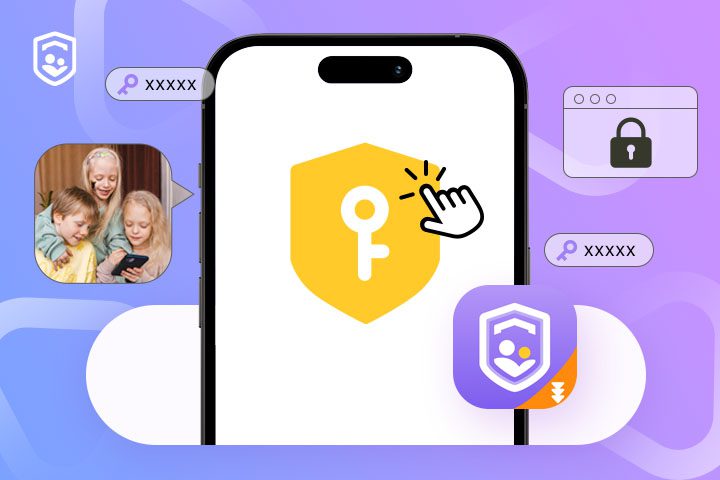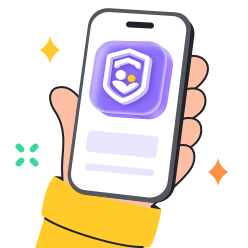We’re crawling with smartphones like some modern limbs grafted to our hands. It looks like students, in particular, have their phones glued to their eyes. Kids communicate, learn and entertain themselves differently with mobile technology. But here’s the burning question: Should cell phones in school actually deserve to be banned, or is there a smarter way to go about the problem?
This isn’t a new issue, but it’s more important than ever. The debate over classroom phones is one that divides parents, teachers and students alike. So, let’s dive into the whirlwind of the opinions, the facts and potentially, the solutions.
What is the impact of phones in school?
First, let’s tackle the elephant in the room: What does phone use actually look like in school? Spoiler: However, not all of it is educational apps and productivity tools.



Key stats and facts
- An article on Pew Research reports that nearly 95% of U.S. teens have a smartphone, and 45% say they are “almost constantly” on the internet. The near-universal ownership demonstrates just how phones have become embedded into everyday life, especially students.
- Banning phones has reportedly been shown to improve test scores by 6.4 percent by the London School of Economics. That’s a pretty big jump, which shows just how much distractions can influence learning.
- An average of 7.5 hours per day is devoted to high school students sitting behind screens. Alarming? Absolutely. While a good chunk of that time coincides with school hours, educators are raising their eyebrows.
Phones in school are a double-edged sword. They’re powerful tools for research, collaboration, and communication on one side. On the other hand, they’re entrances to an onslaught of Internet memes, games, and an infinite amount of TikTok dances. Those are distractions that break focus and take hours to refocus for kids. There’s no way around it; phones have a huge effect on school kids, but it’s a case of whether that’s good or bad depending mostly on how they’re handled.
How many US states ban cell phones in schools?
There’s no nationwide policy about phones in schools in the U.S. States. School districts get to chart their own course instead. Many schools have taken to a blanket ‘no phone zone’ that encourages students to leave their devices behind during school hours; but allow phones in certain locations or during breaks. So there is no clear takeaway from the question, “Should my kid have a phone in school?”
In these states, you can’t ask for a phone at schools:
- California: California decided to limit the time that schools allow kids to use their phones at school in 2020. It’s about empowering educators to decide what is best.
- New York: New York once billed itself as a city that banned telephones. Now, schools decide what to do for themselves, with many opting for a middle ground.
- Virginia: Just recently, Virginia has clamped down on public school phone policies, hoping to curb distractions and boost academic performance.
- Florida: Florida requires that phones remain silent during class but makes finer decisions on what goes with the phones to individual schools and districts.
Empower school kids, protect focus and health: phones managed right with the best tool.
What do teachers say about phones in school?
Let’s be real: The frontline soldiers in the battle over phones in school are teachers. That’s why their insights are so valuable – they see the effects of phone use (and misuse) in person, all the time.
What teachers love:
- Access to information: Classrooms can become instant hubs of instant research with phones.
- Engagement tools: Learning, both at home and in school, becomes more interactive with Polls, Quizzes and interactive apps such as Kahoot. Tech-based activities often do work better than lectures.
- Communication: Phones save lives during emergencies or field trips. They keep students and teachers connected and safe.
What teachers loathe:
- Distractions: Phones are black holes of attention. And just like a magician can produce a rabbit out of a top hat, texting, social media, and gaming steal your focus faster than one.
- Cheating: Sneaking answers during tests with phones takes a hit for academic integrity. More than ever, apps like Photomath make it easy.
- Classroom management: Compliance with phone policies turns into a daily headache. Teachers usually spend more time policing devices than teaching.



Almost all parties agree that the positive elements of phones need to be leveraged and the negative aspects contained – and that better boundaries and policies are required to achieve this.
Should phones be allowed in school: pros and cons
Now, let’s settle into the juicy debate: are phones in school a blessing or a curse? Spoiler: it’s complicated. The argument is strongly made on both sides.
Why is banning phones in school good?
- Reduced distractions: Texting undercover under the desk or scrolling Instagram while in the lecture can be a thing of the past. It gets students’ focus off of social media back to learning.
- Improved focus: Like, phone-free classrooms have been proven to make students more concentrated and engaged. The lessons actually got students to pay attention.
- Better academic performance: The test shows that phone bans lead to higher test scores, according to multiple studies. Students learn better with fewer distractions.
- Classroom order: Fewer teachers are acting as phone police and more teachers are teaching. It generates a peaceful and productive learning environment.
When students aren’t tethered to their phones, they are more present in their relationships with others — with peers and teachers alike – and the curriculum. At least in hopes, the classroom becomes a sanctuary of learning.
Why is banning phones in school bad?
- Loss of connections when needed: It’s difficult for parents to get a hold of their kids during emergencies or other time schedule changes.
- Missed educational opportunities: Used properly, smartphones are powerful learning tools. Each of these apps, research tools and collaboration platforms is an educational wonder.
- Safety concerns: Phones are crucial in emergencies. A total ban would have put students at risk when pandemics, lockdowns, or natural disasters hit.
- Enforcement challenges: The distractions policing a ban can cause are numerous. Taking away phones or watching what students do with their phones takes away from class time.
Solutions on kids’ phone use management in school
When kids are in question, the only reasonable thing to do is to be more involved in their phone use management. Luckily, parental control tools like FlashGet Kids can help. Instantly keep track of your child’s mobile phone use without much manipulation.
- Monitoring device usage and limiting screen time: With the tool, you can limit when and where your children can access their mobile phones.
- Blocking non-essential and distracting apps or sites: Prohibit playing games and social media during school hours.
- Remote camera and one-way audio: Parents can confirm their child’s surroundings and safety by remotely accessing their child’s mobile phone camera and microphone.
- Live location tracking and Geo-fencing: You can know where your child is at all times from his/her mobile phone. Safe areas can be set for them in advance, and you will be notified if they leave.
Everything boils down to how proactive you are when protecting your child in the digital world. By actively engaging in their kids’ digital habits, parents can support responsible mobile phone use that works hand in glove with the school policies.



Educating students on digital citizenship and literacy
We owe it to kids to teach them how to use advanced technology and online tools responsibly. Schools can step in with programs that:
- Explain to the kids how not to be distracted during class time but instead focus on what is being taught.
- Encourage students to practice online etiquette and cyber security and how to behave responsibly when out in cyberspace.
- It is an excellent opportunity to instill healthy habits of mindful use, and you can do that in turn: By switching off notifications while you’re studying.
Other practical solutions
- Designated phone zones: Make phones available only in special areas where students are allowed to use them, like in the hallway, in the cafeteria, or in designated tech zones in the classroom.
- Phone-free periods: Allow for devices during breaks or lunch but keep the classroom phone-free.
- School-wide apps: Build apps that cut down on non-educational features during school hours.
- Clear policies: Set up easy-to-follow rules that are fair, consistent, and have been made with input from kids, parents and teachers.
Creativity goes a long way. It’s about encouraging a tech-positive culture, but not a culture of phones running your life. There may be a fine line between being able to stress it too much and not nearly enough, but it’s also definitely achievable.
Final takeaways
School phones are a controversial topic and with good reason. It can be both a blessing and a curse. The key lies in balance. Banning phones outright might seem to increase focus, but this has its drawbacks. Unchecked phone chaos ensues. The sweet spot? A combination of rules, education, and parental involvement.
So we can use technology in a way that maximizes its benefits while minimizing its downsides if we manage kids’ phone use sensibly. The result? Students who are smarter, more connected, who know when to put their phones down and who know when to pay attention. Isn’t that a dream?

